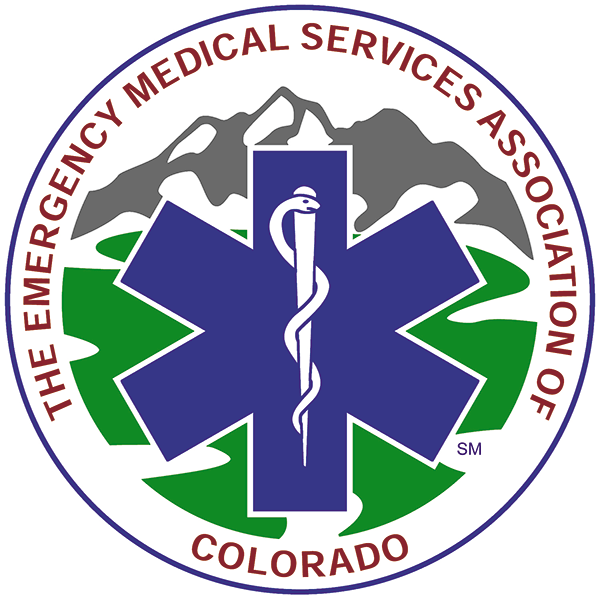At face value, the use of lights and sirens by prehospital emergency medical personnel does not seem to be an area of high-value research or controversy. Drivers are all quite used to seeing emergency vehicles at work on the streets, lights flashing, and sirens wailing. Both lights and sirens are, and for a long time have been, standard components of EMS vehicles. They are used both to decrease the time it takes emergency medical personnel to respond to the location of an accident, illness, or injury, as well as the time it takes to transport the patient to a definitive care center. They are also used to keep medical providers safe while on the scene of an incident. The judicious and safe use of lights and sirens is a topic that has been well-researched recently[1][2], and the manner in which emergency medical service (EMS) providers use them has changed significantly over time. Their use presents quantifiable risks and benefits, both to EMS personnel and to the public. Like any medical intervention, those risks and benefits need to be thoughtfully considered and measured. This is to allow for the greatest safety for EMS providers and non-medical traffic and pedestrians, and the maximal benefit for the patients being transported for care.
History
During the early years of EMS response, the use of lights and sirens mirrored their use in the older and more established fire service. The typical thinking was that a fire could potentially spread very quickly; the earlier that firefighters arrived, the more likely that lives and property could be spared. That logic was appropriate for EMS providers as well. The quicker that a patient could be transported to a hospital, the higher the likelihood of a better outcome. In fact, very early "ambulance drivers" were just that. They had little to no formal medical training, and in most instances, did not even travel with the patient in the rear of the vehicle. Lights and sirens were used to get the patient to trained medical personnel as quickly as possible.
Over the ensuing years, there began scrutiny of EMS protocols regarding the routine, unquestioned use of lights and sirens, looking at both the response phase of the call, as well as the transport phase. As the training of EMS providers began and improved, EMS agencies rightfully started to see themselves as the prehospital adjunct to hospital-based emergency medicine. As such, they were subject to the same questioning of methods, and research to evaluate those methods, that emergency medicine physicians have come to expect and embrace. That research, performed mainly over the last 30 years, looked at the use of emergency lights and sirens with very specific questions in mind: did they make EMS vehicles more conspicuous? Did they save time in EMS response and transport? Did the time make a difference in the medical outcome of the patient? These questions were asked and studied, all within the relative context of the risks that lights and sirens present to EMS workers as well as the public[3].
Without evidence-based research, the continued routine and unquestioned use of lights and sirens by EMS providers would certainly be subject to time-honored and emotionally-driven opinions on the subject by those who use them. The most deeply held belief is that using lights and sirens saves time, and that time, in medical emergencies, is of paramount importance. Indeed, medical professionals still teach the public, as well as medical personnel at all levels of training, that "time is muscle/brain." There are expectations of the public that play a role as well, in that if their lights and sirens were not employed, then the EMS agency involved was not providing the urgency that a patient or family believes is warranted in their situation. There are also those who would believe that the lights and sirens were a part of the attraction of new members to the job, and recruiting would be damaged by any decrease in their usage. The companies that insure EMS agencies played a role as well, believing that the routine use of lights and sirens made EMS vehicle and personnel safer, and their use was required for insurance purposes. If these views were to be questioned, protocols and attitudes toward the use of lights and sirens changed, then quality research was needed.
Issues of Concern
Does the use of lights and sirens save time? Does saving that time effect the medical outcome of the patient? Multiple studies conducted over the last 25 years tried to address these questions. The data suggests that there is a modest reduction in response and transport times. Compiling the results of the various studies, the use of lights and sirens reduces EMS response time between 1.7 to 3.6 minutes and reduces transport time 0.7 to 3.8 minutes[4]. Some of the studies included an independent physician review of the transported medical case. The summary conclusion of the data suggests that the reduction in prehospital time produced a clinical difference in only about 5% of the cases.
Is there an association between the use of lights and sirens, and motor vehicle crashes? One paper estimated that there were over 12,000 motor vehicle collisions involving responding or transporting EMS vehicles in the United States in the 1980s, and 4 times that many incidents involving non-EMS vehicles that reacted in some way to an EMS responder vehicle. Clear cause and effect data is difficult to derive, as each crash is associated with a different set of circumstances, including speed, weather, and experience of both the emergency medical vehicle operator and the operator of the other vehicle involved. But the number of EMS-associated accidents is significant[5].
The use of lights and sirens and the regulations that govern them vary widely among different agencies and locations. Their use is to alert other drivers and pedestrians to the approach or stationary position of an emergency vehicle and to request the right of way. This is hopefully done without overwhelming or otherwise incapacitating the general public. There is less data regarding the effective use of lights than the utilization of sirens. Type, color, and location of lights on EMS vehicles are often subject to local or state ordinances, and the relative effectiveness of light type, color, output, and flashing sequence has not been clearly determined[6]. The US Fire Administration, in a recent report, even suggested that optimal emergency lighting might be different for EMS vehicles requesting the right-of-way compared to those in a stationary position.
There is also no clear consensus regarding any association between strobe-type flashing lights and the development of seizures in onlookers. There is a published series of case reports regarding seizures at emergency scenes that were directly attributed to strobe flashing, while DeLorenzo in 1991 suggests that a clear association has never been proven[6].
The usefulness of sirens seems to be better studied without any more consensus regarding effectiveness. The effectiveness of a warning siren is dependent on a myriad of variables, making standardized conclusions after research quite difficult. Acoustic characteristics of the siren, such as level, frequency and volume play a vital role. So also does atmospheric absorption, the effects of local topography, background noise (from other traffic, or the community), and the varying ability of a human to detect the sound.
The US Department of Transportation published a report in 1978 that concluded that sirens were effective in only 3 distinct scenarios: to vehicles traveling in the same direction as the EMS vehicle, to other vehicles on the road as the EMS apparatus are weaving through traffic, and to pedestrians. Even in 1 of these 3 situations of potential effectiveness, siren operators must also be careful to vary the tone or type of the acoustics, due to the human ability to filter out repetitive or constant noise.
Clinical Significance
If prehospital EMS is to be considered an extension of the care provided in an emergency department (ED), then their methods, interventions, and protocols must be subject to the same rigorous scrutiny as the ones employed by ED staff. Emergency warning lights and sirens are ubiquitous in society, but this does not mean that their use cannot be optimized for the safety of EMS providers, their patients, and the public. Local and state ordinances often govern the use of emergency vehicle lights and sirens, but those laws should be created with hard data in mind, and not driven by the emotions and traditions of the members of the services involved. EMS directors should play a definitive role in the creation of specific ordinances. Attempts to study and refine the use of emergency lights and sirens must continue.
References
- 1. Issacs SM, Cash C, Antar O, Fowler RL. No Need for Speed: Response and transport with red lights and siren. JEMS. 2017 Feb;42(2):41-3. [PubMed]
- 2. Murray B, Kue R. The Use of Emergency Lights and Sirens by Ambulances and Their Effect on Patient Outcomes and Public Safety: A Comprehensive Review of the Literature. Prehosp Disaster Med. 2017 Apr;32(2):209-216. [PubMed]
- 3. Watanabe BL, Patterson GS, Kempema JM, Magallanes O, Brown LH. Is Use of Warning Lights and Sirens Associated With Increased Risk of Ambulance Crashes? A Contemporary Analysis Using National EMS Information System (NEMSIS) Data. Ann Emerg Med. 2019 Jul;74(1):101-109. [PubMed]
- 4. Hunt RC, Brown LH, Cabinum ES, Whitley TW, Prasad NH, Owens CF, Mayo CE. Is ambulance transport time with lights and siren faster than that without? Ann Emerg Med. 1995 Apr;25(4):507-11. [PubMed]
- 5. Maguire BJ, Hunting KL, Smith GS, Levick NR. Occupational fatalities in emergency medical services: a hidden crisis. Ann Emerg Med. 2002 Dec;40(6):625-32. [PubMed]
- 6. De Lorenzo RA, Eilers MA. Lights and siren: a review of emergency vehicle warning systems. Ann Emerg Med. 1991 Dec;20(12):1331-5. [PubMed]



